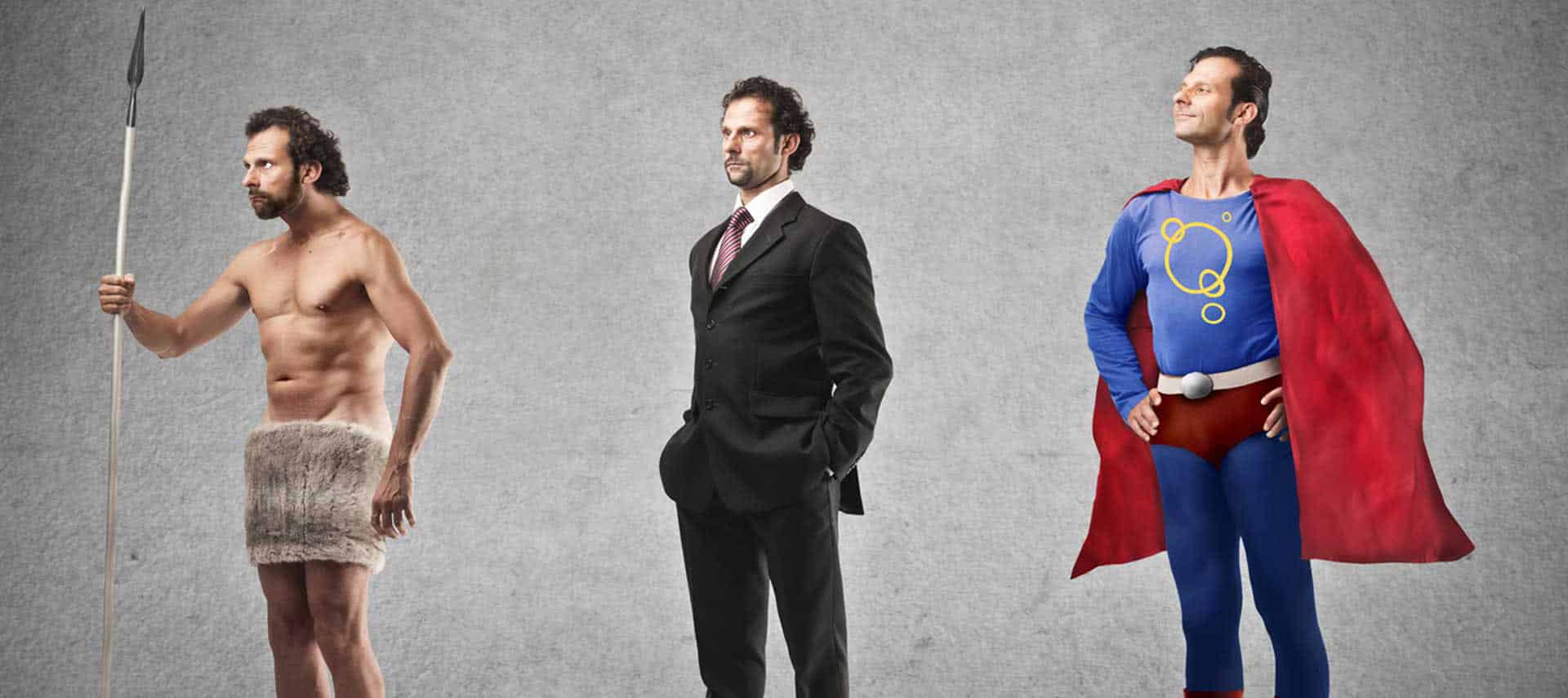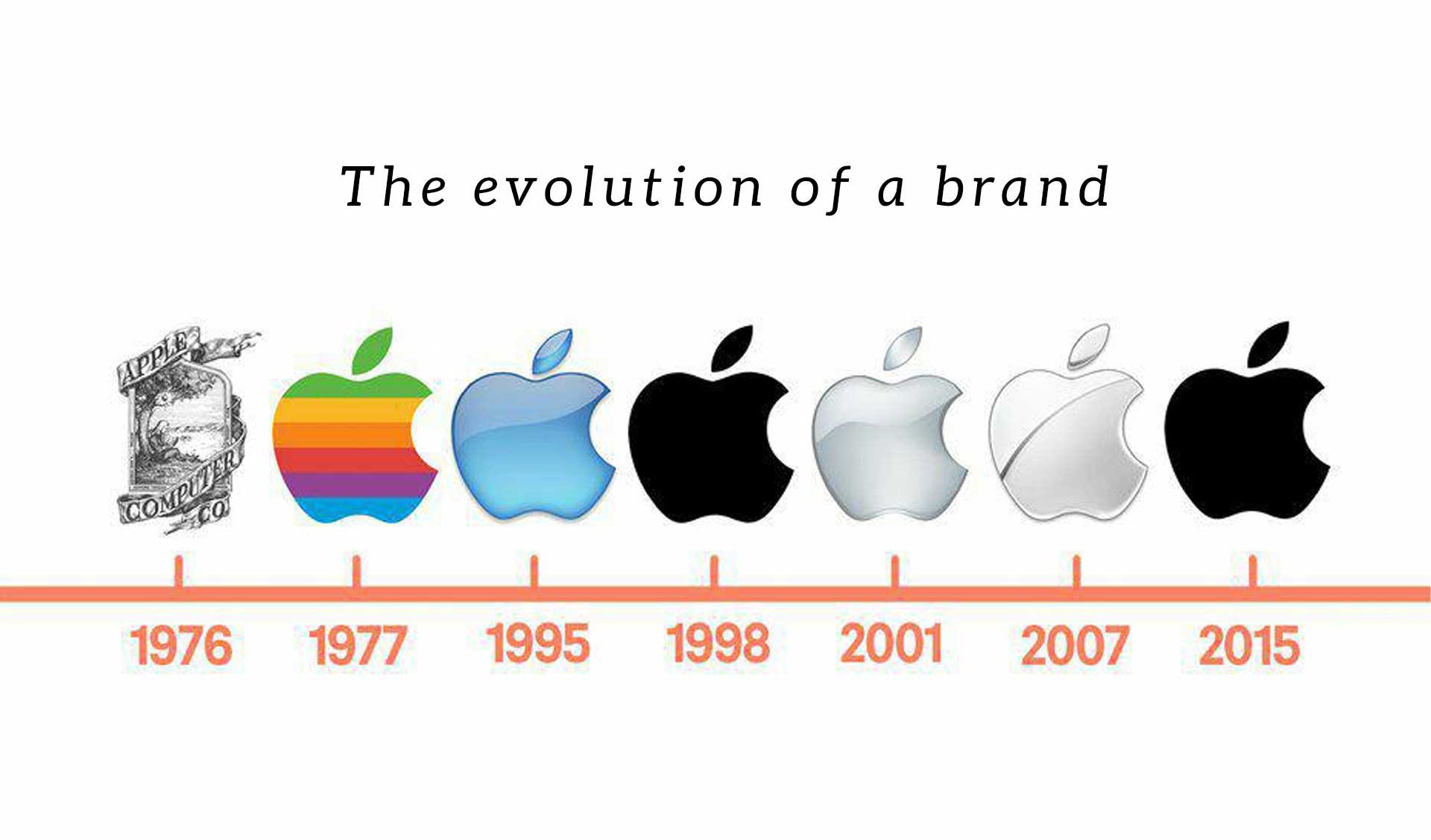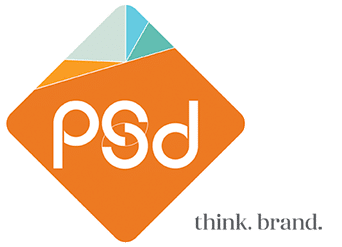
WEBSITE DESIGN CENTRAL COAST & SYDNEY
Brands at one pont or another require change. But when is the right time to rebrand? Is a full rebrand required? Or perhaps a brand refresh of design systems and messaging?
Changing market conditions, refinement of service and product offerings, technological advancements, and a range of other factors force businesses to evolve. Subsequently, you remain relevant, competitive, and at the forefront of your industry sector.
With all these changes, the question arises. Is the brand still relevant? Do we still represent the same values we once did? Does the brand reflect this visually and through the messages we present to our customers?
As the business evolves, so must a brand.
Established brands do this all the time. Apple, arguably the best brand in the world, has reinvented itself multiple times over the course of its inception. For example, since the 1970s, Apple has refreshed its brand in one way or another 5 times.

But when is the right time to rebrand? Is a full rebrand required? Or perhaps a refresh of the brand’s design systems and messaging?
Is there a perfect time for a rebrand or at least a refresh?
The answer to this question is never simple, and unfortunately, there is no crystal ball that guides the way. Each brand has its own challenges, ambitions, future directions and customer expectations to meet. The market is ever-changing. Evolving and is so fast-paced, it is sometimes difficult to keep up. Although there may never seem to be a right time to rebrand, without a willingness to accept change, brands become lost. The brand may lose relevance, become disjointed and subsequently, can lose meaning to customers. With a thoughtful and measured approach, a buy-in from all stakeholders, a well-directed and understood strategy, and a considered roll-out plan, you can revitalise your brand. As a result, keeping your brand fresh in a dynamic and ever-changing marketplace. This article outlines some considerations to think about when performing a rebrand and how you can maintain control of your brand’s destiny.
Take a customer first approach
If we look at a brand in the same way we see people, the first meeting with someone new always draws a first impression. We assess people through the experiences we have with them. Every new engagement provides us with more information. Once we have enough information, we decide whether the relationship is important to us and aligns with our values. Brands are no different.
Each interaction we have with a brand provides us with new information about it. The brand begins to tell us its story and allows us to make a choice if the brand is the right fit for us. Does it align with our values, and will we choose to engage with the brand in the future? At the end of the day, brands are not owned by organisations; they are owned by consumers. However, we do have the ability to persuade and provide perceptions of what we would like our customer to think about them. Remember though, it is our customers’ interaction with a brand that ultimately wins out.
When thinking about a rebrand or refresh, it is important to focus less on our own evaluation of a brand and more on how our customers perceive it. Take an outside-looking in approach to building information and formulating a strategy. And always remember to focus on customers, how they see a brand, feel about a brand, and interact with it. Engaging customers through surveys, social media, and even better, face-to-face conversations, will allow us to discover the value of a brand and how well it speaks and communicates with audiences. Ask questions, not about your products or services, but rather evaluate your reputation, your logo, and your customers’ loyalty to a brand. The answers may surprise you and change your viewpoint.
What is the right way forward?
The decision to perform a full rebrand or a more subtle brand refresh can be determined by many factors such as market and technological advances. If there has been a substantial change in your fundamental business strategies, such as a change from offline to online offerings, a merger, or the introduction of a new product category, a full rebrand may be needed. If your brand is becoming disjointed and difficult to implement across media applications, messaging is becoming less relevant, or the overall visual identity is becoming stale and not keeping up with current trends, a re-look at your identity may be required. Either way, revisiting your brand can provide a spring in your step and generate new excitement in the marketplace. Each business has its own set of challenges that require different approaches to a brand, and each needs to be considered carefully. As a business expands and evolves, the brand must accurately communicate the value propositions and business capabilities clearly to its customers.
What is involved?
Updating a brand does not have to be an overly complicated process. The idea, as with most things, is to start small and build upon it over time. Whether a full rebrand or a brand refresh is required, several key areas need to be looked at to keep your brand on track. The 3 key components to the visual identity of a brand include: 1. the logo 2. messaging 3. the visual identity system. These 3 components will convey, direct, and create a distinct visual look and feel that can be implemented throughout various media platforms and be utilised by both internal and external brand custodians.
Logo
After an assessment of your brand has been performed, you will have a good understanding of what is required of your logo. Unless there have been some significant changes to the business offering, the existing logo will provide the foundation to an updated look. This can consist of changing colour palettes, fonts and some stylisation of the logo. The important factor here is to ensure it is still immediately recognisable and relevant to long-term customers. If more significant changes have occurred and a full rebrand is required, the logo will still need to remain relevant to the core business and what attracted the customers to the brand in the first instance.
Messaging
In a world of technology and online communications, content is one of the key drivers in speaking with your customers. It provides a voice and personality for your brand and guides your brand’s perception in the marketplace. Going back to how we assess new people we meet, messaging provides the voice for a brand. It can be relaxed and passive, direct and informative, it can shout, or whisper. The power of your messaging can connect in a tribal way with your customers, speak with new colloquialisms, and create profound connections. At a minimum, your messaging needs to clearly communicate your offering and define the brand’s value to customers.
Visual identity system – brand guidelines
A visual identity system is your brand’s life-blood. The complexity of your brand will determine what is included. However, at a minimum, a visual identity system will include documentation on logo usage, colour palettes, fonts, imagery, icons, and key brand elements. These will all be documented and will provide guidance as to how the combination of these elements can be used to form the brand’s visual treatment. The biggest benefit of a visual identity system is that it keeps everyone on the same page. It will guide a brand to remain consistent, recognisable and memorable regardless of the brand’s application or who is applying it. It is equally important to maintain and update the visual identity guide to maintain consistency. The documentation within the guide is ever evolving.
Staying on track
Before you embark on a rebrand or refresh, it is important to ensure key personnel internally are on-board and have a clear understanding of what it is you are trying to achieve. The importance of this is paramount to a brand’s success. By having complete clarity of the outcome and goals of a rebrand or refresh, and an understanding and buy-in from all key personnel, you can ensure everyone is working towards the same goal. Briefs can be clearly presented to external suppliers and questions can be asked to ensure everyone remains focused on the desired outcome.
Where to start?
It can all start with a simple discussion. Each business has unique challenges in areas of management and customer needs. Ensuring all the challenges are tabled, discussed, questions answered, and outcomes agreed upon keeps everyone focused and on track. It is important to ensure goals are customer centred with the consumer in mind. Once goals have been set and agreed on, the next step is deciding how these goals will be implemented and which people will achieve the best outcomes for your brand. Engaging a specialist brand agency may be the best way forward. Alternatively, using a varied range of internal and external solutions may achieve the results you are after. To be honest, there is no ‘one’ solution for everyone. However, the openness to explore new opportunities brings new possibilities. The journey is one of excitement, and it will be rewarding to see new life breathed into your brand to keep your customers loyal, engaged and excited.
Need help or simply a chat?
PSD Brand Design is a specialist brand agency helping customers solve business challenges. If you would like help getting the process started or simply a chat to bounce ideas around, our team have expertise with brand strategy and branding design. To see how we may be of assistance, please contact us:
Get a Quote
GET IN CONTACT WITH US.

PSD Brand Design
Tel. 0410 524 094
[email protected]
OPENING HOURS
Monday - Friday 9am - 5pm
Saturday & Sunday closed
GET SOCIAL WITH US.
